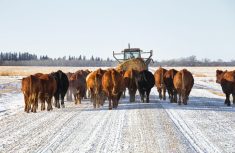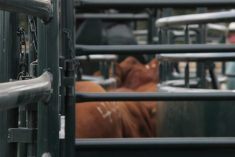March 12 — Stronger fed cattle prices and improving feedlot margins continue to support Canadian feeder cattle prices. While the Canadian dollar continues to gain on the U.S. greenback, Canadian feeder cattle exports are starting to improve. Unofficial data has weekly February feeder cattle exports averaging 6,000 head per week, up from the lows of 2,000 head back in January. This is a positive signal.
Keep in mind we do have a backlog of supplies to work through and it will take until late April to clean up. Despite the Canadian dollar reaching over US98 cents, the U.S. feeder market is trading at a $12 per hundredweight premium to Canadian values. Therefore, we expect feeder cattle exports to increase in upcoming weeks.
Read Also

Canada, Philippines make African swine fever zoning agreement
Canada and the Philippines have signed an African swine fever (ASF) zoning arrangement, a measure that should ensure trade can continue between the countries during outbreak of the disease.
Feedlots in the U.S. Midwest continue to struggle through rainy weather and adverse pen conditions. U.S. fed cattle marketing weights are 15 to 20 pounds lighter than last year and packers are slaughtering larger numbers to fill nearby demand. Under normal conditions, we would see greater demand for replacement cattle; however, the weather forecast is for additional rain over the next seven to 10 days in the feedlot regions. These are the worst conditions to bring cattle into the feedlot, with higher death loss and weight gain inefficiencies.
Canadian fed cattle exports have increased to fill slaughter demand from south of the border. As local feedlots become more current with production, buying interest for replacement cattle has also improved. Domestic feeder prices are realizing some of the benefit of the higher U.S. price structure despite the slower than normal export movement.
— Jerry Klassen is a commodity market analyst in Winnipeg and maintains an interest in the family feedlot in southern Alberta. He writes an in-depth biweekly commentary, Canadian Feedlot and Cattle Market Analysis, for feedlot operators in Western Canada. He can be reached by email at [email protected] or by phone at 204-287-8268 for questions or comments.
The material contained herein is for information purposes only and is not to be construed as an offer for the sale or purchase of securities, options and/or futures or futures options contracts. While the information in this publication cannot be guaranteed, it was obtained from sources believed to be reliable. The risk of loss in futures trading can be substantial. The article is an opinion only and may not be accurate about market direction in the future. Do not use this information to make buying or selling decision because adverse consequences may occur. This information may be wrong and may not be correct about current market conditions in all areas of Canada. This is an opinion only and not based on verified facts.















